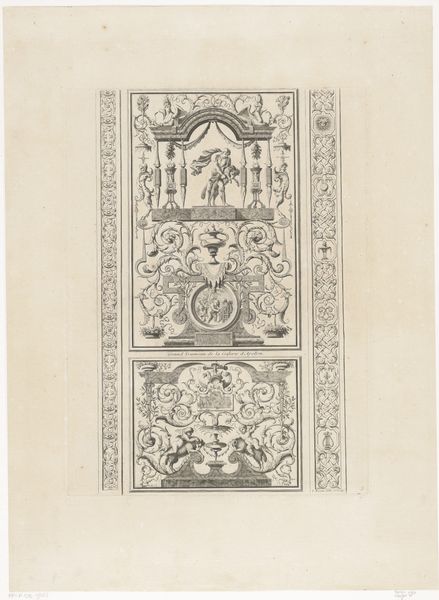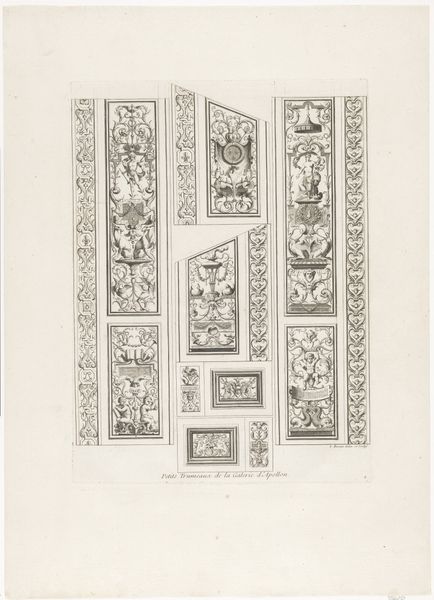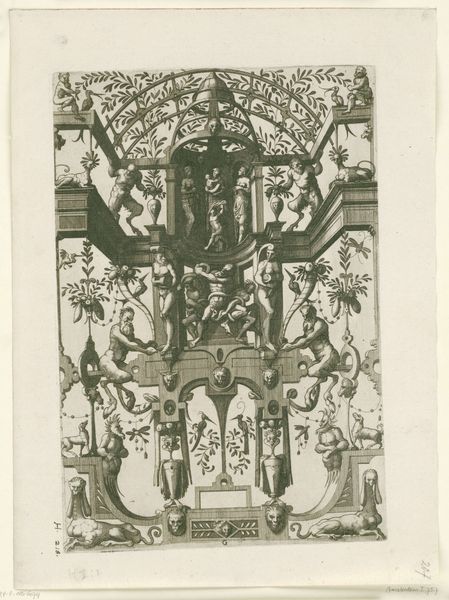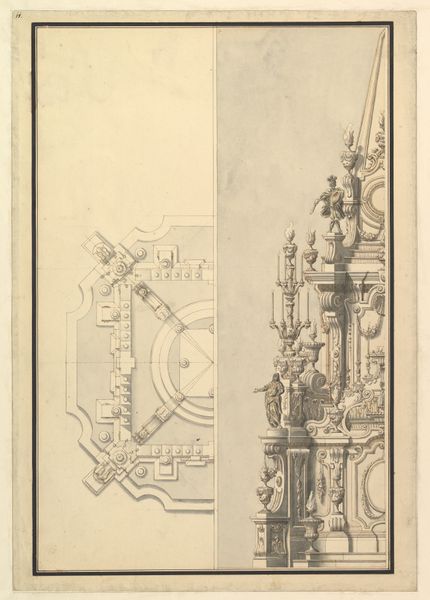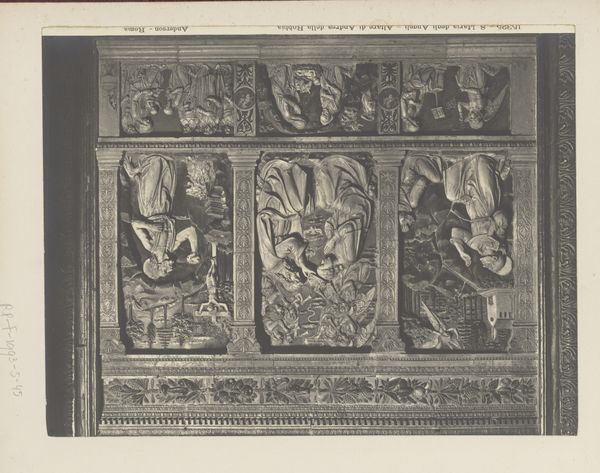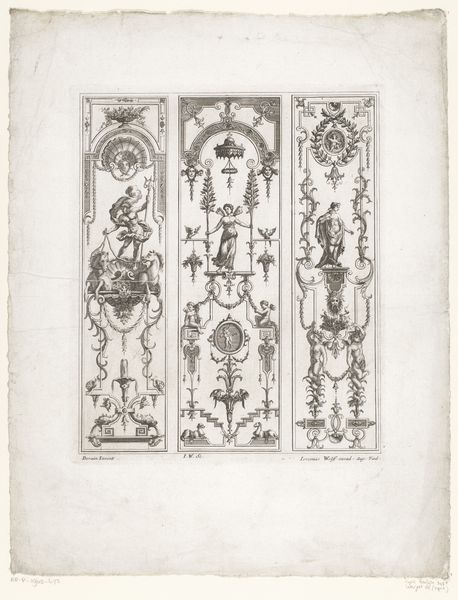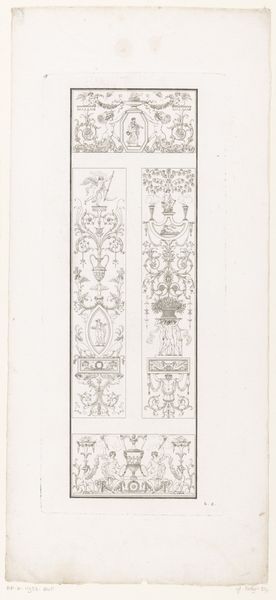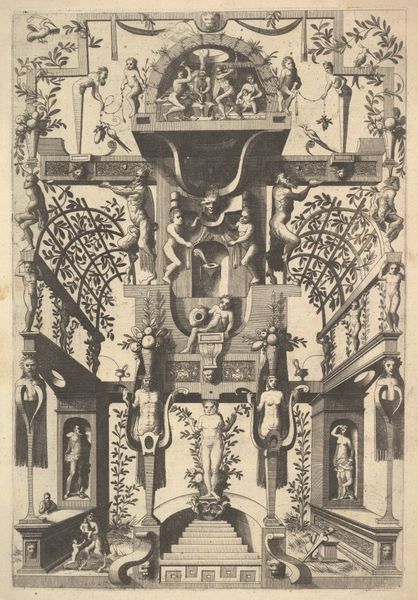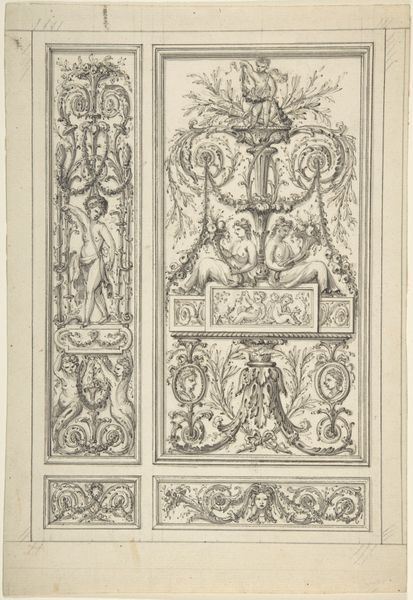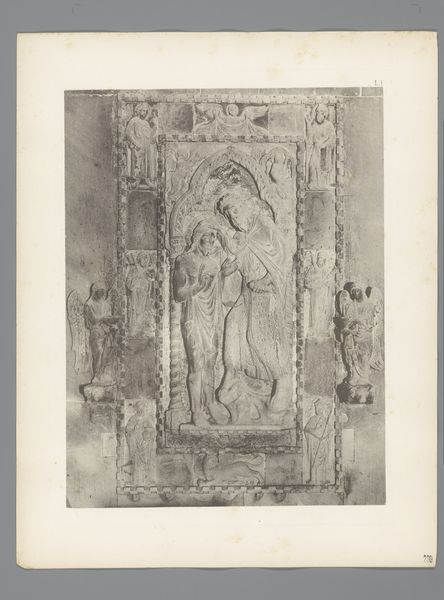
drawing, print, ink, engraving
#
drawing
#
allegory
#
baroque
#
pen drawing
# print
#
ink
#
decorative-art
#
engraving
Dimensions: height 397 mm, width 128 mm, height 397 mm, width 128 mm
Copyright: Rijks Museum: Open Domain
Editor: We're looking at "Ontwerpen voor groteske wanddecoraties" by Philippe Thomassin, dating from the 16th or 17th century. It’s an ink engraving. The detail is incredible, but I'm struggling to get a handle on the imagery... it's so ornate. How do you interpret this work? Curator: What I see is an assertion of power and authority typical of the Baroque period, expressed through classical and allegorical imagery. These "grotesques" weren't meant to be monstrous, but decorative – though their symbolism certainly carries weight. Notice the repeated motifs: deities, mythological creatures, architectural elements. These aren't just decorations; they're a visual language. How might this visual language speak to contemporary ideas of power? Editor: Well, now that you mention it, there’s a kind of visual overload happening. I am not sure I feel invited to think critically, more so I feel overpowered by how it feels as if the symbolism and visual references exclude me. It almost feels… ironic for ‘decorative’ wall art. Curator: Precisely! That tension – between decoration and domination, exclusion and ornamentation - is where the interesting questions emerge. Consider the context. Who was commissioning this work? What message were they trying to send? How might those messages have reinforced existing social hierarchies, class divisions, gender roles? Editor: So, while appearing as ‘just’ wall decoration, these designs carry historical, cultural, and probably deeply political messages? That transforms how I see the artwork! Curator: Absolutely! And that’s the critical approach. We can use historical understanding, alongside contemporary awareness of how visual culture reinforces certain social and political agendas, to bring these designs to life. Editor: It's a lot to think about, but really shifts my understanding beyond simply decorative to deeply thought provoking and intentionally hierarchical! Thanks. Curator: Indeed. It helps me think about today’s forms of design and visual messages, questioning how those too create narratives that can easily uphold—or challenge—ingrained power structures.
Comments
No comments
Be the first to comment and join the conversation on the ultimate creative platform.
